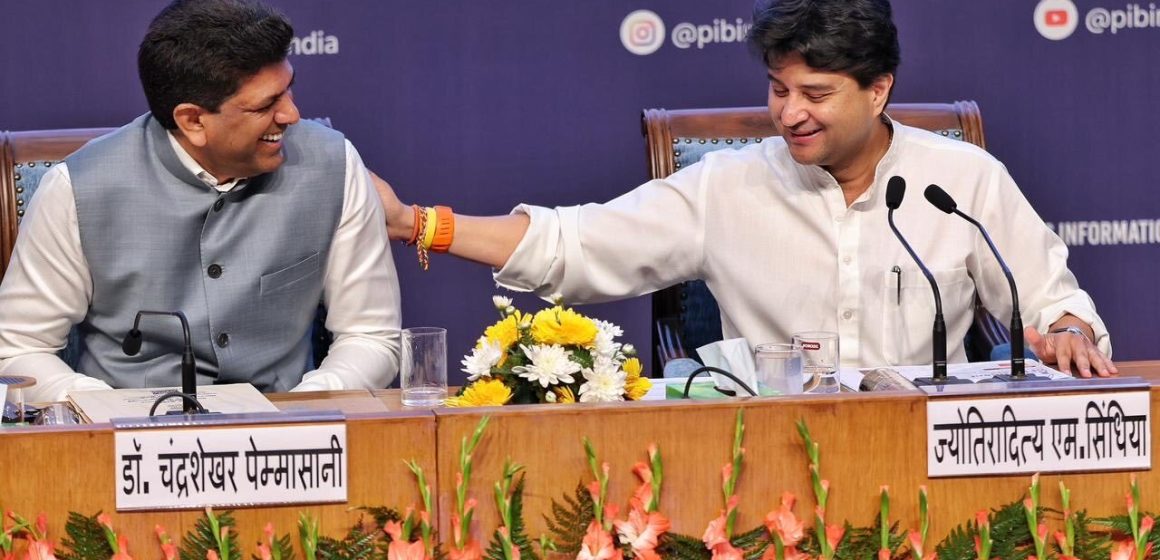The Communications Minister outlines a four-pillar strategy to transform the 177-year-old India Post: organisational reorientation, technology, partnerships, and customer satisfaction.
As global supply chains realign, the 171-year-old India Post may be poised to emerge as the world’s next major logistics player in an entirely new avatar. Union Minister for Communications and Minister for Development of North Eastern Region Jyotiraditya Scindia has said that the Central Government is committed to transforming the postal service under the Department of Posts into a global logistics enterprise.
“As a service delivery organisation, our commitment is to transform India Post into a full-fledged logistics enterprise. Our goal is to ensure seamless first-to-last mile delivery at speed, powered by modern technology. To achieve this, we must overhaul multiple operational aspects and introduce automation across key functions,” Scindia said at a press conference in New Delhi on Friday.
The transformation strategy rests on four pillars: organisational reorientation, technology, partnerships, and customer satisfaction. The Department of Posts has already appointed a chief technology officer (CTO), supported by six deputy CTOs, each aligned to a specific vertical and tasked with translating business propositions into software-driven service offerings.
To benchmark global best practices, a delegation from India Post visited La Poste (France), Royal Mail (UK), USPS (USA), Japan Post, and DHL, the latter a subsidiary of Deutsche Post.
“We studied international systems alongside domestic realities to prepare for this transformation. Changes are now underway across the first mile, middle mile, and last mile of delivery—including sorting automation, hub reorganisation, and fulfilment partnerships. India Post will handle fulfilment for Amazon and Shiprocket, with more logistics firms expected to join,” Scindia added.
Launched in 1854 as the Imperial Post Office by the British, India Post today has over 457,000 employees, including 237,978 Gramin Dak Sevaks. Beyond delivery services, it also offers banking, insurance, retail logistics, and financial inclusion through the India Post Payments Bank.
New Product Rollout in 2026
The announcement builds on the ongoing reorganisation of the Department of Posts.
On August 20, the Department rolled out IT 2.0—Advanced Postal Technology (APT)—a ₹58 billion upgrade to modernise operations across 165,000 post offices. Developed by the Centre for Excellence in Postal Technology (CEPT), APT builds on the earlier IT Modernisation Project 1.0. It uses a microservices architecture hosted on the MeghRaj 2.0 cloud and backed by the telecom service provider BSNL’s nationwide network, enabling seamless digital workflows from booking to delivery across urban and rural India.
“This software will enable tagging and monitoring of all processes, fulfilment tracking, and customer communication. A CRM (customer relationship management) solution is integrated into the system, and we will also monitor the fourth pillar of customer satisfaction as part of this initiative,” Scindia noted.
He also announced the launch of eight new products under the India Post flagship, spanning mail, international, and parcel categories. The two mail products—24 Speed Post and 48 Speed Post—will offer next-day and 48-hour delivery across metros and state capitals, respectively. These will be introduced nationwide in January 2026.
The international suite includes Tracked International for aggregators like Shiprocket, Speed Post International for faster cross-border deliveries, and Direct Line for commercial clearance of shipments, replacing postal clearance via Universal Postal Union (UPU) protocols. These will be piloted in January 2026.
Under the parcel category, India Post will roll out Parcel Last-Mile for platforms like Amazon and Flipkart, Parcel E2E for real-time tracking and delivery, and Parcel Next Day Delivery, all by January 2026.
– Manish Pant


